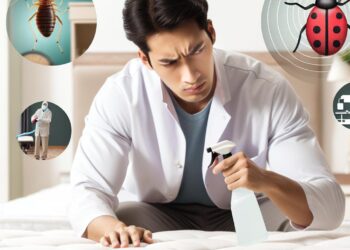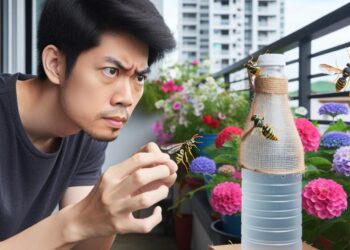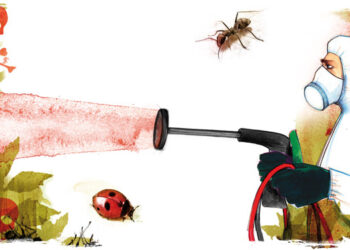Climate change is causing extreme weather events and causing our planet to warm. But there’s another, lesser-known side effect of this warming, it’s creating conditions that are ideal for pests. This is leading to an increased number of pest invasions and a greater threat to the global food supply. The result? More pests than ever before and they’re spreading rapidly.
A new study on the invasive brown marmorated stink bug found that they now exist in at least 30 countries across North America, South America, Asia, Europe, and even Africa. With these new locations comes new threats to agriculture as well as an opportunity for innovations in agriculture to fight back against these invaders.

Why are more pests showing up?
Pests like brown marmorated stink bugs, invasive mosquitoes, and invasive diseases are showing up where they haven’t been before, often as a result of climate change. This is due to a number of factors including a rise in the number of suitable hosts, and the expansion of suitable habitats.
We also know that, as the world warms, certain species including mosquitoes and stink bugs are able to expand their geographic range. This can happen because species are able to move north, or to higher altitudes, to find new sources of water. What’s more, as the climate change, pests are also able to expand their seasonal ranges, meaning they’re able to appear at certain times of the year when crops are growing.
Climate change and the food supply
Climate change is causing extremes across the planet, but the biggest threat may be what it’s doing to the food supply. As the world warms, pests are able to expand their geographic ranges. They’re also able to expand their seasonal ranges, meaning they’re able to appear at certain times of the year when crops are growing.
This makes them an even bigger threat to food security. As the climate changes, it’s also creating new habitats that are suitable for pests. In particular, the changing climate is creating new locations where crops can be grown places like the Mediterranean, the tropics, and, in North America, the southern US and the Pacific Northwest. This has a number of consequences, including an increased risk of pest damage to crops.
What are agricultural innovations needed to fight back against climate change?
Agricultural innovations need to be data-driven. They need to be able to put data to work. They need to be able to make real-time decisions about how best to fight back against the pests that threaten the food supply. And they need to be able to do this in a way that’s cost-effective and efficient. And agricultural innovations need to be able to quickly and easily integrate with each other.
In other words, innovations that work in one sector such as precision agriculture need to be able to easily work with innovations that work in other sectors, such as pest control. This way, they can work seamlessly as a team. Ultimately, agricultural innovations need to be able to take advantage of artificial intelligence and machine learning to fight back against pests. This can be done by using data to make predictions about pests, and using AI and ML to make real-time decisions about how best to combat them.
How can we use artificial intelligence to fight back against pests?
A key way to use AI is to use predictive analytics to make real-time decisions about how best to fight back against pests. This can be done through using data to make predictions about what pests are present and what they’re likely to do. When it comes to predictive analytics, artificial intelligence is at the heart of it all.
This can be done through using AI to make predictions about what’s likely to happen, or to make decisions based on the data. When it comes to what’s likely to happen, artificial intelligence can use machine learning to give accurate predictions. This can be done through using data to train the AI model and then using the model to make real-time predictions.
The key to fighting back against climate change is data-driven innovation
This is where it gets really interesting and really important. Artificial intelligence is only useful if there’s data behind it. And that data has to be accurate. If you have an artificial intelligence model that’s based on inaccurate data, then the model is useless. And if the data used to create the model is inaccurate, then the model’s accuracy is questionable as well.
And that’s the key to fighting back against climate change data. Agricultural innovations need to be able to use data to make accurate predictions about pests, and they need to get their data from an accurate source. And they need to make sure that data is as accurate as possible.
Conclusion
Pests are an increasingly serious threat to the global food supply. This is due to the fact that pests are able to expand their geographic ranges and expand their seasonal ranges as a result of a warming planet. And they’re able to do this because they’re able to exploit new locations and new hosts that are now more likely to be present as a result of climate change.
To combat this, agricultural innovations need to take advantage of data to fight back against pests. This can be done through using data to make accurate predictions about what pests are likely to be present and what they’re likely to do. And it can be done through using AI and ML to make real-time decisions about how best to combat them.
















